
Sajek Valley: The Serene Shangri-La of Bangladesh
Discover Sajek Valley, the serene hill paradise in Bangladesh, known for its scenic beauty, rich cultural heritage, and adventure-filled activities.
Nestled in the Chittagong Hill Tracts, Sajek Valley is a breathtaking destination that offers an escape into nature's lap. Known for its lush green landscapes and rolling hills, the valley stands as a testament to Bangladesh’s untouched beauty. Visitors can enjoy panoramic views that stretch as far as the eye can see, with clouds often drifting through the valley, creating a surreal and magical atmosphere. The valley is home to the indigenous Chakma, Marma, and Tripura tribes, providing a rich cultural tapestry for tourists to explore. Local hospitality is warm and welcoming, allowing visitors to immerse themselves in traditional lifestyles and customs. The food here, often prepared with fresh, local ingredients, adds an authentic flavor to the experience. Apart from its natural allure, Sajek Valley offers various activities for adventure enthusiasts. Hiking trails, scenic viewpoints, and waterfalls are abundant, making it a perfect spot for photography and nature walks. As night falls, the clear skies reveal a canopy of stars, offering a mesmerizing end to a day of exploration. Sajek Valley promises tranquility and adventure, making it a must-visit destination in Bangladesh.
Local tips in Sajek Valley
- Best time to visit is between October and April for clear skies and pleasant weather.
- Carry cash as card payments are not widely accepted in the valley.
- Local guides can enhance your experience by sharing insights and ensuring safety.
- Dress modestly and respect local customs and traditions.
- Pack light but include essentials like a flashlight, first-aid kit, and insect repellent.
Sajek Valley: The Serene Shangri-La of Bangladesh
Nestled in the Chittagong Hill Tracts, Sajek Valley is a breathtaking destination that offers an escape into nature's lap. Known for its lush green landscapes and rolling hills, the valley stands as a testament to Bangladesh’s untouched beauty. Visitors can enjoy panoramic views that stretch as far as the eye can see, with clouds often drifting through the valley, creating a surreal and magical atmosphere. The valley is home to the indigenous Chakma, Marma, and Tripura tribes, providing a rich cultural tapestry for tourists to explore. Local hospitality is warm and welcoming, allowing visitors to immerse themselves in traditional lifestyles and customs. The food here, often prepared with fresh, local ingredients, adds an authentic flavor to the experience. Apart from its natural allure, Sajek Valley offers various activities for adventure enthusiasts. Hiking trails, scenic viewpoints, and waterfalls are abundant, making it a perfect spot for photography and nature walks. As night falls, the clear skies reveal a canopy of stars, offering a mesmerizing end to a day of exploration. Sajek Valley promises tranquility and adventure, making it a must-visit destination in Bangladesh.
When is the best time to go to Sajek Valley?
Iconic landmarks you can’t miss
Risang Waterfall (Terang Toikalai)
Experience the enchanting beauty of Risang Waterfall, a tranquil escape in Bangladesh, perfect for nature lovers and adventure seekers alike.

Konglak Hill Top
Discover the breathtaking views and serene hiking trails of Konglak Hill Top in Sajek Valley, an unmissable destination for nature lovers and adventurers.

Runmoy Resort
Discover the perfect blend of comfort and nature at Runmoy Resort in Sajek Valley, where breathtaking views and warm hospitality await.

Boga Lake
Experience the serene beauty of Boga Lake in Bandarban, a picturesque destination perfect for nature lovers and adventure seekers alike.

Sajek Hill View Resort
Discover the breathtaking beauty of Sajek Hill View Resort, where stunning landscapes meet tranquil accommodations for a perfect getaway.

Megh Machang
Experience breathtaking views and serene relaxation at Megh Machang, Sajek Valley's premier resort hotel, offering nature's beauty and cultural adventures.

Meghpunji Resort, Sajek
Discover the serene beauty and comfort of Meghpunji Resort in Sajek Valley, a perfect escape for nature lovers and adventure seekers.

Lushai Heritage Village
Experience the rich culture and breathtaking landscapes at Lushai Heritage Village in Sajek Valley, a true gem for travelers seeking authenticity.

Relax Sajek Resort
Experience the serene beauty of Sajek Valley at Relax Sajek Resort, where nature and comfort meet for an unforgettable getaway.

Sampari Resort
Discover tranquility and breathtaking views at Sampari Resort, your perfect escape in Sajek Valley, Bangladesh.
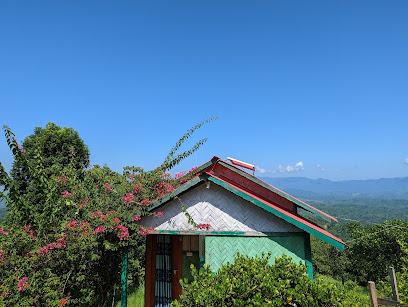
Ruilui Tripuri Para
Experience the breathtaking views and rich culture at Ruilui Tripuri Para in Sajek Valley, a hidden gem for adventurous travelers.

Sajek Eco Cottage
Experience the beauty of Sajek Valley at Sajek Eco Cottage, where nature meets comfort for an unforgettable retreat.

Sajek Valley - সাজেক ভ্যালি / মেঘের উপত্যকায় জীবন
Explore the breathtaking beauty of Sajek Valley, a serene hilltop retreat in Bangladesh perfect for nature lovers and adventure seekers alike.

Jumghor Eco Resort
Experience serenity and sustainability at Jumghor Eco Resort in Sajek Valley, where nature meets comfort for a memorable stay.

Meghadree Eco Resort
Discover the enchanting Meghadree Eco Resort in Sajek Valley, where nature meets comfort in a serene eco-friendly retreat.

Unmissable attractions to see
Alutila Guha
Explore the breathtaking Alutila Guha, a stunning cave system in Bangladesh offering adventure, nature, and cultural heritage.

Risang Waterfall (Terang Toikalai)
Explore the mesmerizing Risang Waterfall in Bangladesh, where nature meets tranquility in a stunning cascade of beauty.

Konglak Hill Top
Explore the natural beauty and panoramic vistas of Konglak Hill Top, a premier hiking destination in Bangladesh for nature lovers and adventure seekers.
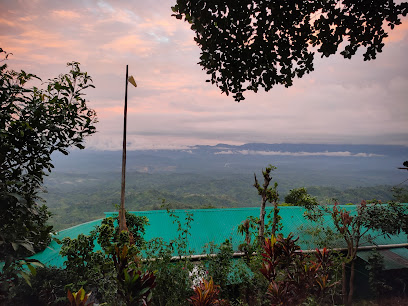
Runmoy Resort
Experience tranquility and natural beauty at Runmoy Resort in Sajek, a top destination for relaxation and local culture.

Hazachora Waterfalls (Katal Twisa Waterfalls)
Experience the enchanting beauty of Hazachora Waterfalls, a hidden gem in Bangladesh offering breathtaking views and a tranquil escape into nature.

Lushai Heritage Village
Explore Lushai Heritage Village in Sajek Valley, an authentic glimpse into the vibrant culture and stunning scenery of Bangladesh.
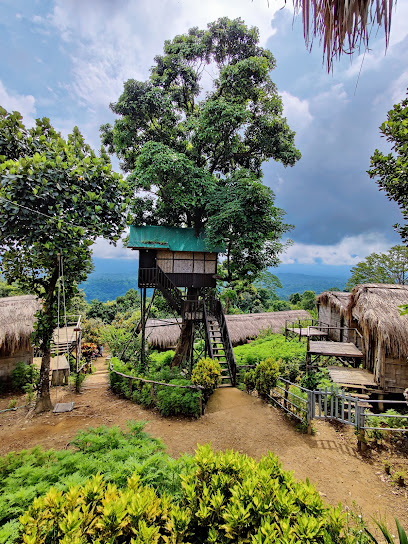
Hill Cottage Sajek
Discover the tranquility of Hill Cottage Sajek, a resort hotel in the heart of Bangladesh's breathtaking hills, perfect for relaxation and adventure.

কংলাক ত্রিপুরা পাহাড়
Experience the serene beauty of nature at Kanlak Tripura Paradise, a premier hiking area in Tripura that promises an unforgettable outdoor adventure.

Ruilui Tripuri Para
Experience the breathtaking beauty and rich culture of Ruilui Tripuri Para, a serene tourist attraction in the hills of Sajek, Bangladesh.

Sajek Valley - সাজেক ভ্যালি / মেঘের উপত্যকায় জীবন
Explore the serene beauty and rich culture of Sajek Valley, a hidden gem in Bangladesh that promises stunning landscapes and warm local hospitality.

The Stone Garden
Explore the breathtaking landscapes and serene beauty of The Stone Garden in Sajek, a tranquil escape for nature lovers and adventure seekers alike.

Konglak Twisa Waterfall
Explore the breathtaking beauty of Konglak Twisa Waterfall, a serene oasis in Bangladesh, perfect for nature lovers and adventure seekers.

Sara Nilkutir - Sajek Resort ( সারা নীলকুটির - সাজেক রিসোর্ট )
Discover the serene beauty of Sajek at Sara Nilkutir Resort, where nature meets tranquility for the perfect getaway.

কংলাক রিয়াং ঝর্না
Discover the tranquil beauty of Kanlak Rirang Dhrana in Sajek, a breathtaking tourist attraction surrounded by lush landscapes and serene views.

Meghpolli Resort, Sajek
Experience the breathtaking beauty and serene landscape of Sajek at Meghpolli Resort, your perfect getaway in nature's lap.

Essential places to dine
Sajek Valley
Experience nature's beauty and cultural richness at Sajek Valley, Bangladesh's hidden paradise offering breathtaking views and warm hospitality.
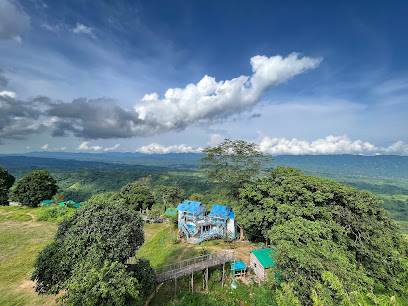
System Restaurant
Experience authentic Bangladeshi cuisine at System Restaurant in Khagrachari - where every dish tells a story.
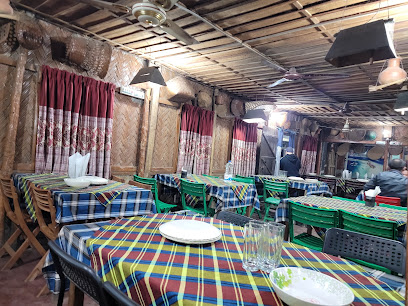
Runmoy Resort
Discover serenity at Runmoy Resort in Sajek Valley - where natural beauty meets comfort.
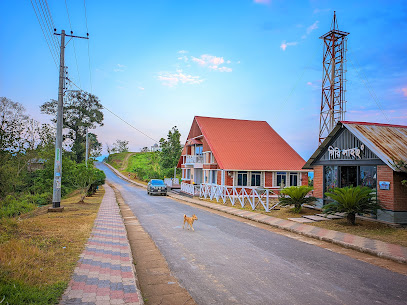
Sajek Hill View Resort
Experience serenity at Sajek Hill View Resort – your gateway to breathtaking landscapes and tranquil retreats amidst nature.

Megh Machang
Discover the breathtaking Sajek Valley at Megh Machang Resort - where natural beauty meets modern comfort in a serene setting.

Chang Pang Restaurant
Discover authentic Bangladeshi flavors at Chang Pang Restaurant in Kaptai – where every meal tells a story.

Meghpunji Resort, Sajek
Experience tranquility and breathtaking views at Meghpunji Resort in Sajek Valley – your perfect getaway destination.

Chhimbal Restaurant
Experience family-friendly dining at Chhimbal Restaurant in Sajek Valley, where delicious local flavors meet stunning views.

Montana Restaurant Sajek
Experience authentic flavors and breathtaking views at Montana Restaurant in the heart of Sajek Valley.

Abakash Eco Resort Sajek
Discover peace and tranquility at Abakash Eco Resort Sajek - your gateway to nature's beauty in Bangladesh.

Sajek Valley - সাজেক ভ্যালি / মেঘের উপত্যকায় জীবন
Explore Sajek Valley: A breathtaking blend of lush hills, vibrant culture, and serene beauty awaits you in this enchanting Bangladeshi destination.

Jumghor Eco Resort
Experience serene relaxation amidst nature at Jumghor Eco Resort in Sajek Valley - your perfect getaway destination.

Khasrang Hill Resort
Experience tranquility amidst nature at Khasrang Hill Resort in Sajek Valley - your perfect getaway destination.

Nil Pahari Eco Resort Sajek
Discover tranquility at Nil Pahari Eco Resort Sajek - a perfect blend of nature, comfort, and local culture in stunning Sajek Valley.

Larong Resort
Experience tranquility and luxury at Larong Resort in Konglak Para—where nature meets unique design.

Markets, malls and hidden boutiques
Megh Machang
Discover the beauty of Sajek Valley at Megh Machang, a tranquil resort hotel offering stunning views, adventure, and relaxation.

Lushai Heritage Village
Discover the rich cultural tapestry of the Lushai people in the breathtaking Lushai Heritage Village, a must-visit destination in Sajek Valley.

Megh Kabbo Hilltop Cottage
Discover the tranquility of Megh Kabbo Hilltop Cottage, a serene retreat in the heart of Sajek Valley, perfect for nature lovers and adventure seekers alike.

Abakash Eco Resort Sajek
Discover tranquility and natural beauty at Abakash Eco Resort Sajek, your eco-friendly retreat in the heart of Sajek Valley.
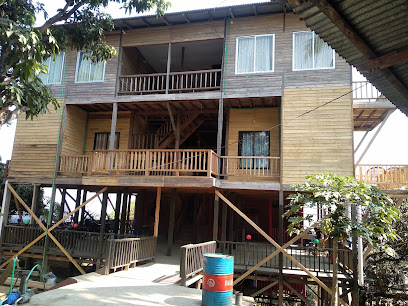
Jumghor Eco Resort
Experience tranquility and natural beauty at Jumghor Eco Resort, a perfect getaway for relaxation in the heart of Sajek.

Sajek Valley - সাজেক ভ্যালি / মেঘের উপত্যকায় জীবন
Experience the breathtaking beauty of Sajek Valley, a serene escape in Bangladesh with lush landscapes and rich cultural experiences.
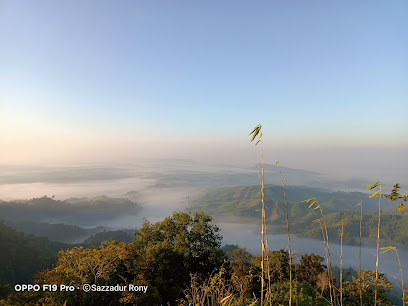
Meghadree Eco Resort
Discover the beauty of Sajek Valley at Meghadree Eco Resort, a serene eco-friendly retreat surrounded by lush nature and vibrant culture.

The Stone Garden
Discover the serene beauty of The Stone Garden, a must-visit park in Sajek offering stunning views and a peaceful escape into nature.

Coffee Dawr কফি ডাওয়ার
Discover the serene beauty of Sajek at Coffee Dawr, where exquisite coffee meets breathtaking views in a cozy atmosphere.

Rungrang Resort Cottage
Discover the tranquil charm of Rungrang Resort Cottage in Sajek Valley, where breathtaking views and cozy accommodations await every traveler.

Sajek Seni Lushai Cottage & Restaurant
Experience the serene beauty of Sajek Valley at Sajek Seni Lushai Cottage & Restaurant, where comfort meets local culinary delights.

Julie's Cappuccino Cafe
Discover the perfect blend of tranquility and flavor at Julie's Cappuccino Cafe, a must-visit coffee spot in Sajek's stunning natural setting.
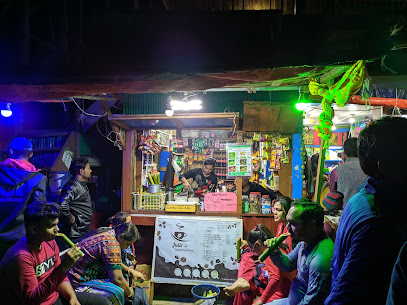
Sajek Valley
Discover the breathtaking Sajek Valley, a serene escape in Bangladesh with stunning landscapes, rich culture, and endless adventures in nature.
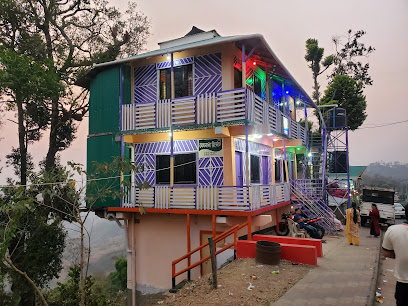
Thingpui Sen
Experience the tranquil beauty of Sajek at Thingpui Sen, where local tea delights and serene surroundings await every visitor.

Gilead Pharmacy
Explore Sajek with peace of mind at Gilead Pharmacy, your trusted partner for health and wellness needs.

Essential bars & hidden hideouts
Chhimbal Restaurant
Experience the best of Bangladeshi cuisine at Chhimbal Restaurant, a family-friendly gem in the heart of Sajek Valley, perfect for memorable dining moments.

Montana Restaurant Sajek
Discover the rich flavors of Bangladesh at Montana Restaurant Sajek, where breathtaking views meet a delightful culinary experience.

Sajek Hotel Peda Ting Ting
Experience the flavors of Sajek at Sajek Hotel Peda Ting Ting - a culinary gem with breathtaking views and authentic local cuisine.

FoodNKI
Experience the flavors of Sajek at FoodNKI, where local culinary traditions meet global tastes in a stunning setting.

Kashbon Restaurant
Discover authentic Bangladeshi cuisine at Kashbon Restaurant in Sajek, where every dish tells a story of local flavors and hospitality.

জুম্মবী হোটেল & রেষ্টুরেন্ট সাজেক- Jummabi Hotel & Restaurant
Discover the flavors of Sajek Valley at Jummabi Hotel & Restaurant, where local cuisine meets breathtaking views for an unforgettable dining experience.

সাজেক চিলেকোঠা রেষ্টুরেন্ট
Experience authentic Bangladeshi cuisine at Sajek Chilikotha Restaurant, where breathtaking views and delicious flavors come together in perfect harmony.

The Taste of Sajek Restaurant
Experience the authentic flavors of Bangladesh at The Taste of Sajek Restaurant, a culinary gem in the heart of Sajek Valley.

Runmui Restaurant
Experience the authentic flavors of Bangladesh at Runmui Restaurant, a top dining destination in the picturesque Sajek hills.

Chibai Sajek Restaurant
Experience the flavors of Sajek at Chibai Sajek Restaurant, where local cuisine meets breathtaking views in a serene setting.
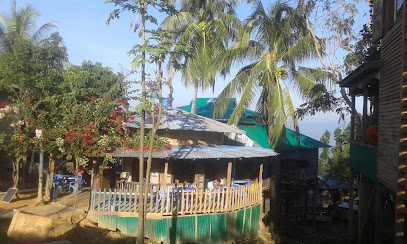
Sinari resort & restaurent
Experience the heart of Sajek with authentic local cuisine at Sinari Resort & Restaurant, where nature meets culinary delight.

সাজেক কুটুমবাড়ি রেস্টুরেন্ট
Discover authentic Bangladeshi cuisine at Sajek Kutumbari Restaurant, where culinary delights meet breathtaking views in Sajek's paradise.

Dream Sajek Resort
Savor delicious local and international cuisines at Dream Sajek Resort, a serene dining haven surrounded by breathtaking nature.

Khakhrhacori
Discover the flavors of Sajek at Khakhrhacori, a delightful restaurant offering local cuisine and stunning natural views.

Seni Lushai Restaurant
Discover the flavors of Sajek Valley at Seni Lushai Restaurant, where local cuisine meets stunning natural beauty in an unforgettable dining experience.
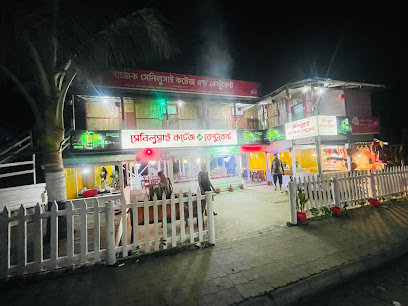
Local Phrases about Sajek Valley
-
- Helloনমস্কার
[Nomoshkar] - Goodbyeবিদায়
[Biday] - Yesহ্যাঁ
[Hyām] - Noনা
[Na] - Please/You're welcomeঅনুগ্রহ করে
[Ōnugrôh kôre] - Thank youধন্যবাদ
[Dhônnobād] - Excuse me/Sorryদুঃখিত
[Dukhito] - How are you?তুমি কেমন আছো?
[Tumi kemon asho?] - Fine. And you?ভালো। আর তুমি?
[Bhalo. Ar tumi?] - Do you speak English?তুমি ইংরেজি কথা বলতে পারো?
[Tumi ingreji kotha bolte paro?] - I don't understandআমি বুঝিনি
[Ami bujhini]
- Helloনমস্কার
-
- I'd like to see the menu, pleaseমেনুটা দেখতে চাই
[Menu ta dekhte chai] - I don't eat meatআমি মাংস খাই না
[Ami mangsh khai na] - Cheers!চিয়ার্স!
[Cheers!] - I would like to pay, pleaseদয়া করে আমি দেন।
[Doya kore ami den.]
- I'd like to see the menu, pleaseমেনুটা দেখতে চাই
-
- Help!সাহায্য!
[Sahayyo!] - Go away!চলে যাও
[Chole jao] - Call the Police!পুলিশকে কল করুন!
[Polishke kol korun!] - Call a doctor!ডাক্তারকে কল করুন!
[Daktarke kol korun!] - I'm lostআমি হারানো
[Ami harano] - I'm illআমি অসুস্থ
[Ami osustho]
- Help!সাহায্য!
-
- I'd like to buy...আমি ... কিনতে চাই
[Ami ... kinte chai] - I'm just lookingআমি শুধুমাত্র দেখছি
[Ami shudhumatro dekhchi] - How much is it?এটা কত টাকা?
[Eta kot taka?] - That's too expensiveএটা খুব মহঁগ
[Eta khub mohong] - Can you lower the price?দাম কমাতে পারবেন?
[Dam komate parben?]
- I'd like to buy...আমি ... কিনতে চাই
-
- What time is it?এখন কত বাজে?
[Ekhan kot baje?] - It's one o'clockএকটা বাজে
[Ekta baje] - Half past (10)দশটা না দশের অর্ধেক
[Dosh ta na dosher ordhek] - Morningসকাল
[Shokal] - Afternoonদুপুর
[Dupur] - Eveningসন্ধ্যা
[Shondhya] - Yesterdayগতকাল
[Gatkal] - Todayআজ
[Aj] - Tomorrowআগামীকাল
[Agamikal] - 1এক
[Ek] - 2দুই
[Dui] - 3তিন
[Tin] - 4চার
[Char] - 5পাঁচ
[Panch] - 6ছয়
[Chhoy] - 7সাত
[Sat] - 8আট
[At] - 9নয়
[Noy] - 10দশ
[Dosh]
- What time is it?এখন কত বাজে?
-
- Where's a/the...?... কোথায়?
[... Kothai?] - What's the address?ঠিকানা কি?
[Thikana ki?] - Can you show me (on the map)?আমাকে দেখাবেন (ম্যাপে)?
[Amake dekhabe (map-e)?] - When's the next (bus)?পরের গাড়ি কখন?
[Porer gari kokhon?] - A ticket (to ....)টিকেট একটা (.... এ)
[Ticket ekta (.... e)]
- Where's a/the...?... কোথায়?
History of Sajek Valley
-
Sajek Valley is home to several indigenous communities, including the Chakma, Marma, and Tripura tribes. These tribes have inhabited the area for centuries, maintaining their unique cultures, traditions, and languages. The indigenous people primarily engage in farming, weaving, and traditional crafts, which are integral to their way of life.
-
During the British colonial period, the region around Sajek Valley experienced significant changes. The British established administrative control and introduced new agricultural practices. Roads and infrastructure were developed to facilitate the movement of goods and people, which had a lasting impact on the local communities.
-
After Bangladesh gained independence in 1971, the government initiated various development projects to improve the living standards of the indigenous communities in Sajek Valley. These efforts included building schools, healthcare facilities, and roads to connect the remote areas with the rest of the country. This period marked a significant transformation in the socio-economic landscape of the region.
-
In recent years, Sajek Valley has become a popular tourist destination, attracting visitors with its stunning landscapes and cultural richness. The influx of tourists has led to the development of resorts, eateries, and other amenities. While this has boosted the local economy, it has also brought challenges in terms of preserving the natural environment and cultural heritage.
-
Sajek Valley is known for its vibrant cultural festivals, such as the Biju festival celebrated by the Chakma tribe. These festivals showcase traditional music, dance, and cuisine, providing a glimpse into the rich cultural heritage of the indigenous communities. Visitors often get the opportunity to participate in these celebrations, making their experience in Sajek Valley even more immersive.
-
Given the pristine natural beauty of Sajek Valley, there have been concerted efforts to promote environmental conservation. Various non-governmental organizations and local communities are working together to protect the forests, wildlife, and water resources of the region. These initiatives aim to ensure that Sajek Valley remains a sustainable and eco-friendly destination for future generations.
Sajek Valley Essentials
-
Sajek Valley is located in the Rangamati District of Bangladesh, close to the India-Bangladesh border. The nearest major city is Khagrachari. To get to Sajek Valley, you can take a domestic flight from Dhaka to Chittagong, followed by a bus or rental car to Khagrachari. From Khagrachari, you can hire a local jeep (known as 'Chander Gari') to take you to Sajek Valley. The journey from Khagrachari to Sajek typically takes around 4-5 hours due to the hilly terrain and winding roads.
-
Transportation within Sajek Valley primarily consists of local jeeps (Chander Gari), which are well-suited for the rough terrain. These jeeps can be hired for tours around the valley and to nearby attractions. Walking is also a popular way to explore the area, given its scenic beauty and relatively small size. For longer trips or visiting nearby towns, renting a car or arranging transport through your accommodation is advisable.
-
The official currency in Bangladesh is the Bangladeshi Taka (BDT). While credit cards are accepted in some hotels and larger establishments, it is advisable to carry cash, particularly for smaller vendors and in rural areas like Sajek Valley. ATMs are scarce in Sajek Valley, so it is recommended to withdraw sufficient cash in Khagrachari or Dhaka before heading to Sajek.
-
Sajek Valley is generally a safe destination for tourists. However, it is important to exercise standard precautions. Avoid walking alone at night in secluded areas and keep an eye on your belongings in crowded places. There are no specific high-crime areas targeting tourists, but it is always best to stay vigilant and aware of your surroundings.
-
In case of emergency, dial 999 for immediate assistance. Sajek Valley has a local police station and basic medical facilities. For serious health issues, it is advisable to travel to Khagrachari or Chittagong. It is recommended to have travel insurance that covers medical emergencies. Local pharmacies can provide over-the-counter medications for minor health issues.
-
Fashion: Do dress modestly, as Sajek Valley is a conservative area. Avoid wearing revealing clothing. Religion: Do respect local customs and traditions. Remove your shoes when entering religious sites. Public Transport: Do be respectful and give up your seat to elderly passengers. Don't eat or drink on public transport. Greetings: Do greet people with a smile or a slight bow of the head. Handshakes are less common. Eating & Drinking: Do try local delicacies and accept food offerings graciously. Don't refuse hospitality, as it is considered impolite.
-
To experience Sajek Valley like a local, visit the indigenous villages where you can learn about the culture and traditions of the local tribes such as the Chakma, Marma, and Tripuri. Engage with locals, who are often friendly and willing to share stories about their way of life. Don't miss the sunrise and sunset views from the hilltops, which are truly breathtaking. For a unique experience, participate in a local fishing trip or hike through the scenic trails surrounding the valley.
Trending Landmarks in Sajek Valley
-
Risang Waterfall (Terang Toikalai)
-
Konglak Hill Top
-
Runmoy Resort
-
Boga Lake
-
Sajek Hill View Resort
-
Megh Machang
-
Meghpunji Resort, Sajek
-
Lushai Heritage Village
-
Relax Sajek Resort
-
Sampari Resort
-
Ruilui Tripuri Para
-
Sajek Eco Cottage
-
Sajek Valley - সাজেক ভ্যালি / মেঘের উপত্যকায় জীবন
-
Jumghor Eco Resort
-
Meghadree Eco Resort
Nearby Cities to Sajek Valley
-
Things To Do in Comilla
-
Things To Do in Agartala
-
Things To Do in Chittagong
-
Things To Do in Sylhet
-
Things To Do in Dhaka
-
Things To Do in Barisal
-
Things To Do in Cox's Bazar
-
Things To Do in Imphal
-
Things To Do in Shillong
-
Things To Do in Khulna
-
Things To Do in Guwahati
-
Things To Do in Kohima
-
Things To Do in Jessore
-
Things To Do in Mrauk U
-
Things To Do in Bagan







